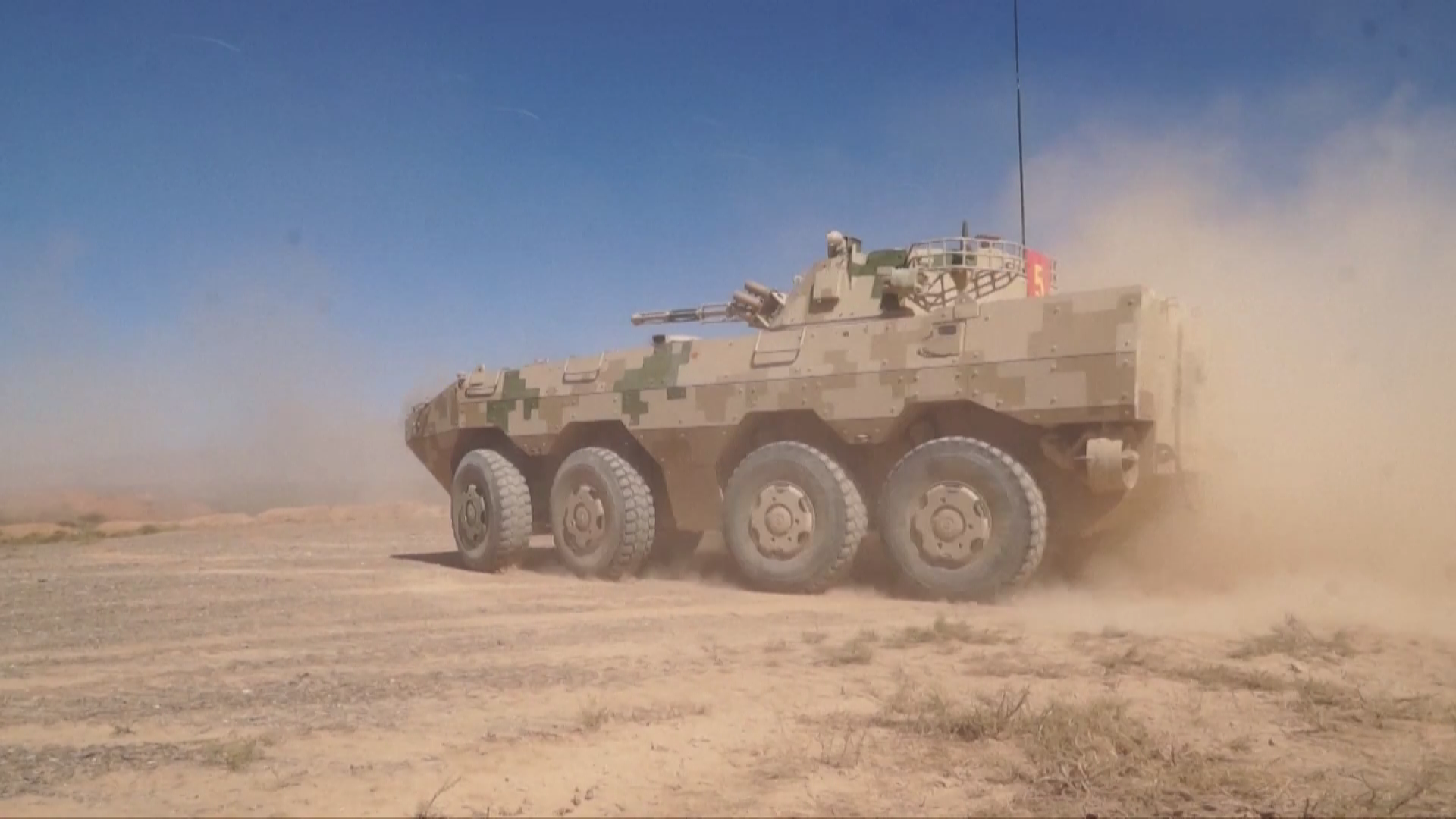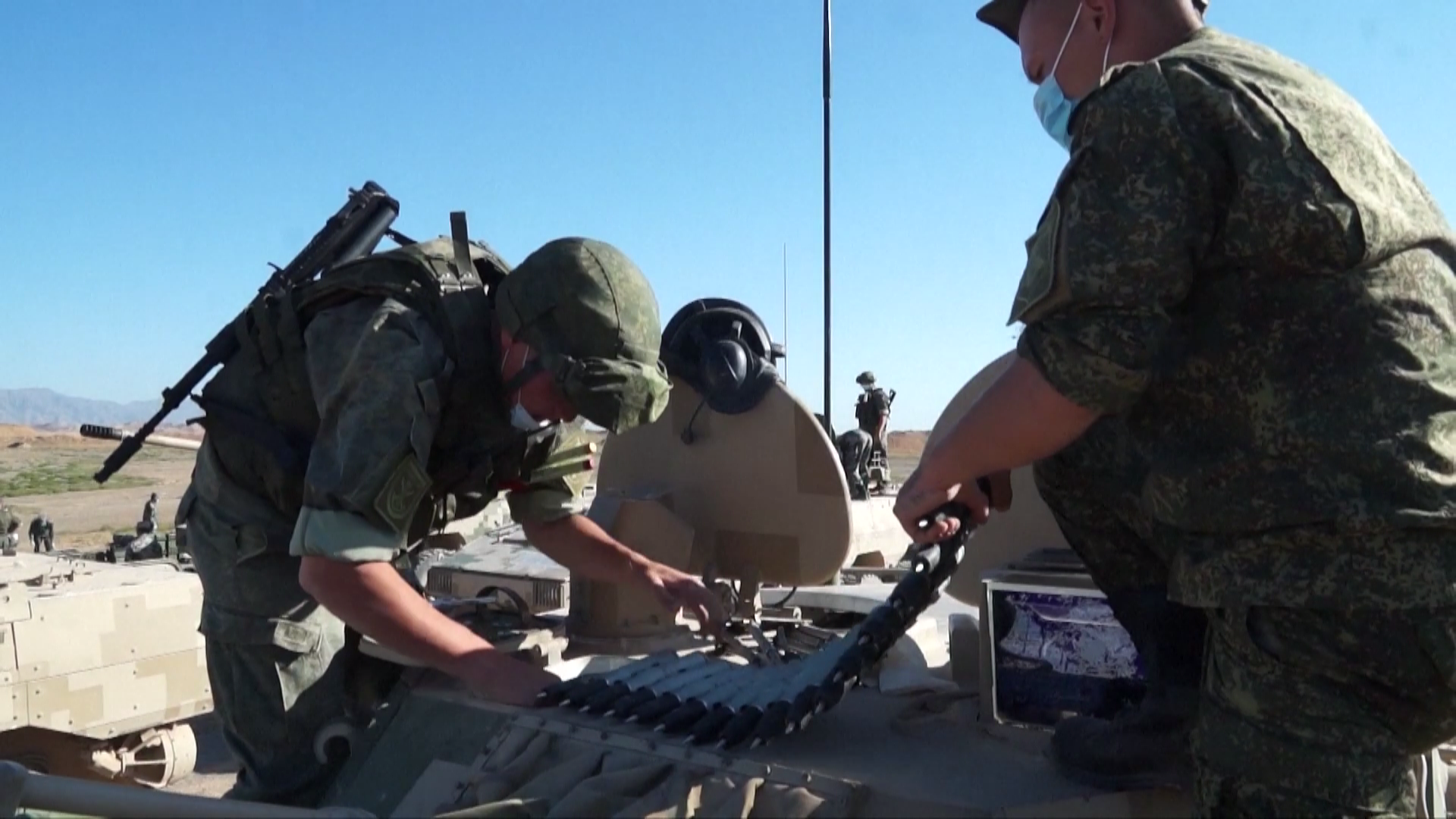
Editor's note: Danil Bochkov is an expert with the Russian International Affairs Council. He graduated cum laude with a master's degree in economics from MGIMO-University under the Ministry of Foreign Affairs of Russia and a master's degree in world economy from the University of International Business and Economics in China. The article reflects the author's opinions and not necessarily the views of CGTN.
On August 9, Russia and China kicked off joint military exercises for the fourth year in a row in northwest China's Ningxia Hui Autonomous Region. The tradition of geographically labeled military exchanges commenced in 2018 with the "Vostok" maneuvers, followed by "Tsentr" in 2019, "Kavkaz" interactions in 2020 and, in 2021, some 10,000 troops have gathered for "Zapad/Interaction."
2018's "Vostok" maneuvers marked a new chapter in Russia-China military collaboration as the first example of Moscow letting a foreign state participate in an annual strategic command-staff exercise deemed the largest and most prominent assessment of the country's military liaison and combat readiness.
The current exercises have several distinctive features. It is the first solely binational military interaction of its kind – the other three drills featured at least several former Soviet Republics or other regional actors. The exercises are taking place outside of Russia for the first time – a fact that speaks volumes about the growing trust between Moscow and Beijing as well as their willingness to deepen multi-layer interaction and cross-border collaboration.
In early September, Moscow will hold similar drills "Zapad – 2021" with its closest ally, Belarus, on the territory of both states, pulling together about 13,000 servicemen. The decision to separate the exercises, unlike the "Kavkaz" drills last year when all three participated together along with other states – may be a sign of growing regional instabilities requiring targeting of a more micro- rather than macro-level of multilateral interaction. Now the Taliban is swiftly filling the void following the U.S. pullout of troops from Afghanistan – a decision that raised concerns among Russian and Chinese officials.
Russia-Belarus exercises are aimed at demonstrating to NATO that Minsk and Moscow are ready to withstand any attempts to threaten their sovereignty. Those fears have been aired by Russia concerning Defender Europe 2021 drills with parallel criticism of NATO's continuous build-up of forces on the Russian border and the ongoing conflict in eastern Ukraine with Russia. Kyiv, which has very fractious relations with Moscow, has criticized the planned drills as "aggressive in nature."
Russia and China have been effectively strengthening military-to-military exchanges over the years. Their bilateral collaborations are not limited to multilateral exercises held annually under the auspices of the Shanghai Cooperation Organization (SCO), known as "Peace Mission," but also feature the "Vostok," "Tsentr," "Kavkaz" and "Zapad" maneuvres as well as "Naval Interaction." The noteworthy uptick in military ties expanding from only SCO-led drills to the bilateral level with exercises covering more combat domains was marked in 2016 with the launch of "Aerospace Security" aimed at improving cooperation to repel air and missile threats from other countries.

Soldiers take part in the China-Russia military drill in northwest China's Ningxia Hui Autonomous Region, August 2021. /CFP
Soldiers take part in the China-Russia military drill in northwest China's Ningxia Hui Autonomous Region, August 2021. /CFP
In 2015 both navies conducted joint exercises in the Mediterranean Sea, after Chinese warships visited the Russian Black Sea base of Novorossiysk. In 2017, Russia and China reinforced their close interaction by conducting naval exercises in the Baltic Sea, which was the first time the PLA Navy was present in the area, which is of paramount strategic importance to Russia.
The close cooperation between Moscow and Beijing in the Asia-Pacific demonstrated by these examples signify growing concerns that both states share concerning the region becoming an arena for competition among global powers. It follows the Biden-inspired and U.S.-led coalescence of alliances to curb China's rise. Moscow and China are willing to oppose the U.S. attempts to foster regional power by intensifying military collaboration bilaterally and with other regional actors.
In December 2019, Moscow, Tehran and Beijing held the first joint naval drills in the Indian Ocean and the Gulf of Oman in a show that trilateral relations had reached a meaningful level. In February 2021, Moscow and Tehran also conducted two-day joint naval drills in the Indian Ocean with China initially planning to join in.
Russia-China close-knit ties in military affairs are also noted by the U.S. leading think tanks such as the U.S. Naval Institute, which in a June 2021 article stressed that "Sino-Russian military exercises signal a growing alliance." It also highlights that since 2003 Moscow and Beijing have overall held 30 joint military drills with steadily increasing frequency, complexity, and geographic scope. The drills effectively help the Russian and Chinese militaries to meliorate tactical and operational capabilities, serve a mutual reassurance function, and signal third parties that China and Russia have a shared commitment to mutual security interests.
In September, China again will join Russia in a round of exercises – SCO "Peace Mission-2021," which will take place in southwest Russia's Orenburg region. Before the "Zapad/Interaction 2021" drills started, China's defense ministry said that the intention is to "consolidate the China-Russia comprehensive strategic partnership of coordination in the new era, and deepen practical cooperation and traditional friendship."
(If you want to contribute and have specific expertise, please contact us at opinions@cgtn.com.)

